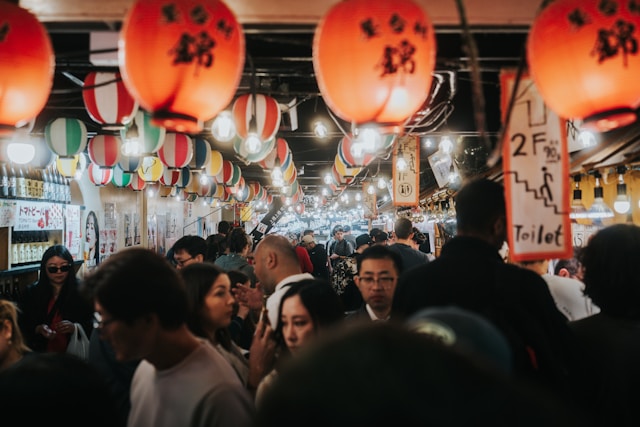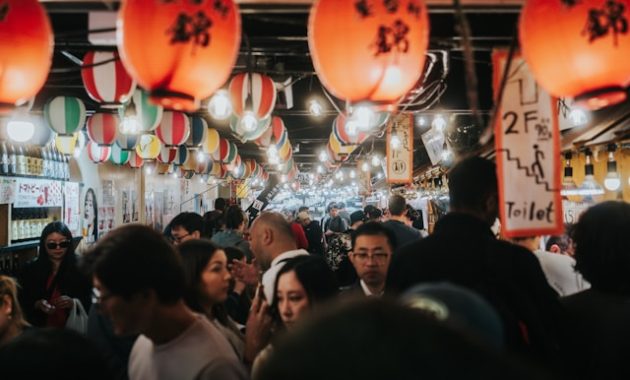
Kyoto, with its ancient temples, serene gardens, and traditional tea houses, is a favorite destination for travelers who seek to experience the essence of Japan. While famous spots like Fushimi Inari Shrine and Kinkaku-ji attract large crowds, Kyoto has a wealth of hidden gems that are often overlooked. For those looking to step away from the main tourist path and uncover the city’s lesser-known treasures, we present a curated list of off-the-beaten-path experiences that showcase the true magic of Kyoto.
1. Otagi Nenbutsu-ji: The Forgotten Temple
Tucked away in the hills of Arashiyama, Otagi Nenbutsu-ji is a whimsical and spiritual retreat far removed from the usual tourist spots. This temple is known for its 1,200 stone Rakan statues, each representing a disciple of Buddha, and each with a unique expression. As you walk through the temple grounds, you’ll find these statues peeking out from the moss-covered landscape, some smiling, some meditative, and others playful.
Why it’s special: Unlike the busier temples in Kyoto, Otagi Nenbutsu-ji offers a tranquil atmosphere, allowing visitors to immerse themselves in the peaceful surroundings. The quirky expressions on the statues add a layer of charm and individuality rarely found in other temples.
Tip: Combine your visit to Otagi Nenbutsu-ji with a stroll through the nearby Sagano Bamboo Forest, but go early in the morning to avoid the crowds.
2. Kurama-dera and the Mystical Mountain
Just a short train ride from the center of Kyoto, the town of Kurama offers a perfect blend of nature, history, and spirituality. The main attraction here is Kurama-dera, a temple perched high on Mount Kurama. A winding trail through cedar forests leads to this peaceful sanctuary, offering breathtaking views of the surrounding valleys.
Kurama-dera is not just a place of worship; it is also the birthplace of the Reiki healing practice, and its mystical energy is believed to resonate throughout the area. Visitors often claim to feel a deep sense of calm and renewal after walking the temple grounds.
Why it’s special: The hike up to Kurama-dera, with its natural beauty and fresh mountain air, provides a welcome escape from the city’s bustling streets. This is also an ideal spot for travelers interested in Japan’s esoteric spiritual traditions.
Tip: After visiting Kurama-dera, continue hiking to the nearby town of Kibune, where you can enjoy a riverside meal on traditional kawadoko platforms in the warmer months.
3. The Philosopher’s Path: A Serene Stroll Along the Canal
While it’s not a complete secret, The Philosopher’s Path is often overlooked in favor of more iconic spots in Kyoto. This picturesque walkway follows a canal lined with cherry blossom trees, and stretches between Ginkaku-ji (Silver Pavilion)and the Nanzen-ji temple complex.
Named after the famous Japanese philosopher Nishida Kitaro, who walked this route daily, the Philosopher’s Path is a perfect place to reflect and enjoy Kyoto’s natural beauty at a slow pace. During spring, the cherry blossoms turn this quiet path into an ethereal tunnel of pink petals, while autumn brings vibrant reds and oranges to the trees.
Why it’s special: Unlike other more crowded tourist attractions, the Philosopher’s Path offers a quiet, contemplative journey through one of Kyoto’s most scenic areas. It’s an ideal way to connect with the quieter side of the city.
Tip: Visit during early morning hours to enjoy the path with fewer people. There are also several quaint cafes and craft shops along the way, perfect for a peaceful break.
4. Nishiki Market: Kyoto’s Kitchen

For a deeper dive into Kyoto’s culinary culture, head to Nishiki Market, a lively and bustling market that spans five blocks. Known as “Kyoto’s Kitchen,” this market has been serving the local community for over 400 years, offering a vast array of traditional Japanese ingredients, fresh produce, and artisanal goods.
From grilled seafood to delicate mochi, this market is a food lover’s paradise. Nishiki Market also offers unique treats like pickled vegetables, yuba (tofu skin), and hand-crafted sweets, making it a must-visit for those looking to indulge in authentic Kyoto flavors.
Why it’s special: Nishiki Market gives visitors an authentic taste of local life. Here, you’ll find a mixture of ancient traditions and modern-day culinary creativity, all within the heart of Kyoto.
Tip: Don’t miss the opportunity to try Kyoto-style sushi, known as “sabazushi,” a type of pressed sushi that uses cured mackerel instead of raw fish.
5. Fushimi Sake District: Discovering Japan’s Traditional Brew
While most visitors to Fushimi flock to the iconic Fushimi Inari Shrine, the Fushimi district is also home to some of the best sake breweries in Japan. This area’s pure water and ideal climate have made it one of the premier sake-producing regions for centuries.
Visitors can tour traditional sake breweries like Gekkeikan Okura Sake Museum, which offers a deep dive into the history and production of sake. The museum’s tasting room is a highlight, where you can sample a wide range of brews, from sweet to dry, and learn how the nuances of water, rice, and fermentation shape the flavor profiles of different sakes.
Why it’s special: The Fushimi Sake District combines the best of Kyoto’s ancient traditions with its modern-day appeal. It’s an immersive way to understand Japan’s deep cultural relationship with sake.
Tip: Many breweries in the area offer tastings and tours in English, so it’s a great chance to learn more about this traditional craft in a friendly, welcoming environment.
6. Adashino Nenbutsu-ji: A Tribute to Forgotten Souls
Adashino Nenbutsu-ji, located in the northern part of Arashiyama, is a serene and reflective site that often escapes the attention of tourists. This temple is dedicated to the souls of those who passed away without family or relatives to remember them. Thousands of stone statues, known as Buddha Rakan, stand silently as a tribute to these forgotten souls.
During the annual Sento Kuyo ceremony in August, the temple grounds are illuminated with thousands of candles, creating a moving atmosphere of remembrance and peace. The surrounding bamboo groves and quiet paths add to the temple’s sense of calm and contemplation.
Why it’s special: Adashino Nenbutsu-ji offers visitors a chance to reflect on the transience of life, a central theme in Japanese spirituality. The solemn beauty of the temple and its connection to the past make it a profoundly moving experience.
Tip: Plan your visit in autumn when the leaves around the temple turn brilliant shades of red and gold, enhancing the tranquil beauty of the site.
7. Shoren-in Temple: A Hidden Sanctuary in the City
Shoren-in, located near Chion-in and Yasaka Shrine, is a hidden sanctuary that often goes unnoticed despite its central location. The temple is set within a lush garden and features impressive rooms decorated with traditional fusuma (sliding door) paintings. The inner garden, with its pond, tea house, and towering camphor trees, offers a perfect escape from the bustling city outside.
Shoren-in is particularly known for its nighttime illuminations, which cast a magical glow over the garden and temple buildings. Visiting in the evening provides a unique experience, as the temple transforms into a serene, dreamlike landscape of light and shadow.
Why it’s special: Shoren-in combines artistic beauty with natural serenity, offering an intimate and peaceful retreat in the heart of Kyoto. The temple’s less-touristed nature adds to its allure.
Tip: Visit during the night illumination events, which usually take place in spring and autumn, for a truly unforgettable experience.